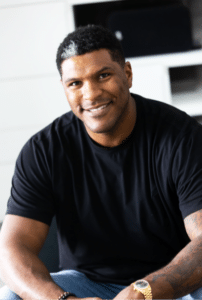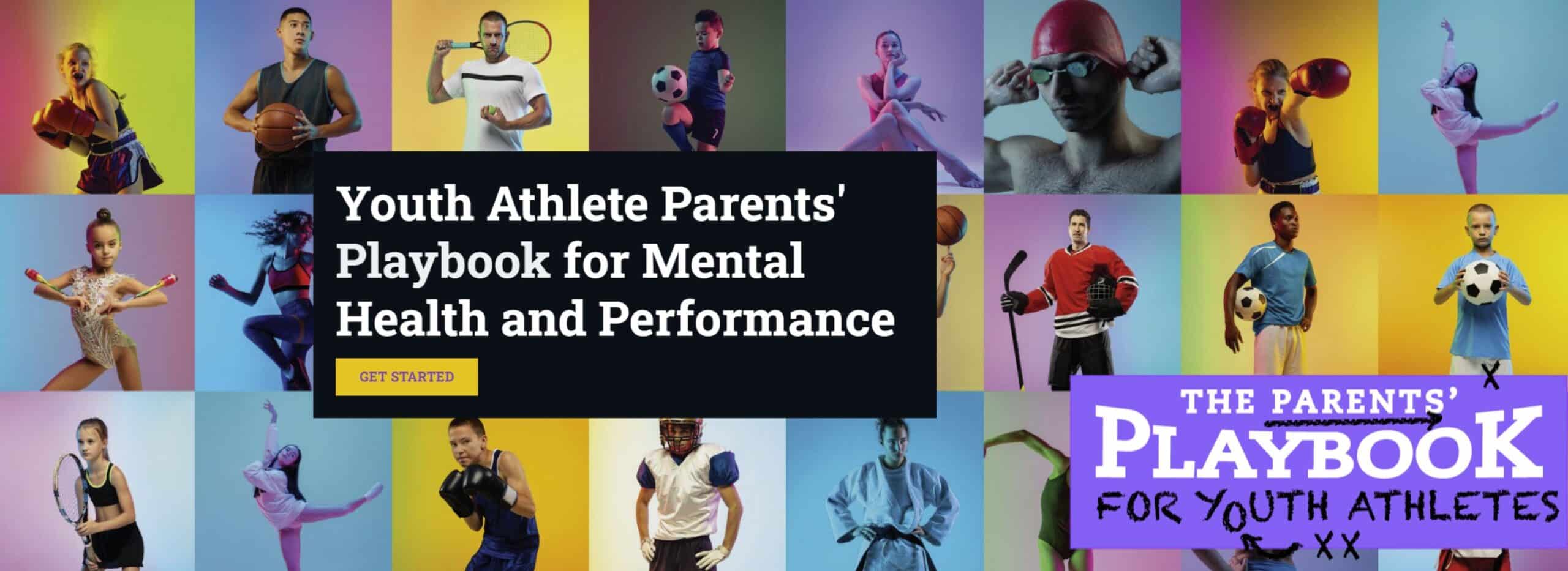Americans in general are sports crazy. Hundreds of millions of people watch baseball, hockey, basketball and of course football virtually every day a game is on. Close to 10 million individuals actually play high school and college sports—everything from contact contests to Olympic-style sports. There are great benefits and lessons to be learned from both. However, there are also growing concerns over the potential impact sports can have on high school and college athletes, concussions being among the leading worries. Millions of sport-related concussions, in fact, happen annually in the U.S. particularly when it comes to high-contact sports like football. The potential dangers of concussions are real. What’s less clear is the extent of the injuries on an amateur level and the ability of parents, coaches, athletes and healthcare officials to identify and deal with the consequences to ensure young players are receiving the support needed. Julius Thomas is perfectly positioned to shed some light on these issues. A former Division One athlete who enjoyed a seven-year career in the NFL that began in 2011, he is also the CEO of his consulting and coaching company, Mastery Development and Co. Thomas also serves as vice president of the Society for Sports Neuroscience on the NFL Players Association Behavioral Health Committee. Beyond this, he more recently founded The Parents’ Playbook, an organization designed for parents to deal with some of the physical and mental health pressures their sons and daughters may be facing playing sports. He currently holds a master’s degree in clinical psychology and is working towards earning a PsyD. in clinical health psychology at Nova Southeastern University. He recently spoke to WellWell about the challenges young athletes face and what needs to be done to help them better handle these physical and mental health issues.
It seems like you must be 100 years old to have accomplished all you have, but you’re only in your 30s. After all this, what inspired you to get a doctorate?
Well, actually my work was part of my pursuit of getting a doctorate. When I was in my 7th year in the NFL, I just felt that there was a passion shifting inside of me and I was wondering where it went, what was going on and why I wasn’t loving the game the way I used to. And I just really had this desire to help people. I’ve seen a lot from the area I grew up in, the things that teammates have gone through. I’ve had so many teammates unfortunately die before the age of 35. So, you’re constantly seeing things going on. I wanted to join the helping profession and the way I wanted to do it was by better understanding the mind, the brain and people’s health and well-being.
Are players aware of what the game may do to them physically or mentally at a professional and elite level?
I think it’s very important to talk about the game of football objectively. One of the things we’re starting to become more aware of is that the players aren’t exactly aware and haven’t had maybe the amount of education they should have. They need a lot better understanding of their health risks and the health consequences of playing in the game of football. I think that’s probably one of my biggest ambitions. And to continue to talk about American-style football; the good and the bad. So, people have a good understanding and they’re able to make informed decisions because I think that’s really what’s important as a person that’s studying to be a clinician or a healthcare provider. You want people to be able to make informed decisions. And that takes a lot of education. There’s been a lot of research done on American-style football. Probably the most researched sport there is for different reasons. We have started to uncover a lot of information and I think it is very helpful for anybody that’s associated with the game of football to better understand.
There are about 4 million sports-related concussions in the U.S. Not all of these involve football, but I suspect the vast majority do. Is that an overblown concern? Not just the numbers, but the potential impact of what these concussions may lead to for young athletes?
I think one of the trends that I’m starting to see that is so important to talk about is that we’re starting to kind of look at this thing in two different ways. And this is very interesting because Grant Iverson is probably the most researched individual long concussion ever with over 600 publications on the topic. His research group at Harvard just wrote a systematic review that came out spring of this year and one of the big things they said was maybe it’s time that we start talking about the effects of sports-related concussions and repetitive head traumas in two separate categories. Youth athletes and pro athletes. Because sometimes what happens is people look at some of the consequences, the stories and the things that happen in pro athletes and they just extrapolate that and then say that this is the risk for youth athletes. But the research does not support that. The research supports that amateur athletes tend to do similar to the general population when it comes down to the long-term consequences for their brain health, which I think is really encouraging. Like we’re talking about 1 percent of the people are going to play past amateur status. But we have so many people that are very concerned, and rightly so. I think it’s good that we start to talk about how this narrative is changing. But for youth athletes, a lot more research is showing that we should slow down a little bit. Maybe it’s been a little bit more sensationalized.
Is it that the players just aren’t as violent in high school or college? Is it that they’re simply getting fewer concussions or that the concussions for some reason aren’t as bad?
It’s really hard to talk about the why. I think, especially when we talk about the brain getting down to the causation of what has and hasn’t happened is really something that we haven’t been able to really elucidate from a research perspective. So, I just want to make sure I say that clearly, but I have some suspicions or some hypothesis that I believe contributes to that and one of them is biology. We sometimes understand that children are more at risk, but they’re also more resilient. When’s the time you want to have any kind of injury? You probably want it earlier in life. I also know the difference between a 14- and 15-year-old linebacker and a 30-year-old. The forces are much greater at the professional level. The frequency in which you’re playing, you’re getting a lot more exposure at higher levels at a lot greater forces. And I think that that’s probably going to be some of the things that we see start to lend towards kind of what happens over time. If you think about the course of an athlete’s life, like the person that ends at 18 like most people do, they got maybe a third or half of the exposures of a person who plays into their 30s. And so, I think that there are some contributing factors that we have to look at. But from what the research has shown–and there are some great quality research studies available–is that we haven’t been able to see a significant difference between the brain health of individuals who play just amateur sports and people in the general population.
Do you think especially at the high school level, are coaches and athletic directors aware of the potential dangers? Do you think schools are aware of what precautions to take?
Yeah, absolutely. And I think the first thing I want to clarify is on an acute level people when they’re in high school, college or pro have very similar risks. But when you look at the long-term consequences on brain health, it’s less for amateur athletes than pro athletes. But I do want to be clear that amateur athletes are absolutely at risk of negative effects that come with concussion and one of the biggest ones that I make sure that I always mention when I talk about concussion because this is what people need to be most aware of in my opinion is Second Impact Syndrome. And Second Impact Syndrome is basically when you’ve got the first concussion right and you’ve got some damage, some swelling to the brain and you’re starting to experience some concussive side effects. But if you sustain another concussion before the first concussion has had a chance to heal, there can be deadly consequences. So often when you hear about a player who died due to a concussion, it’s generally because of the Second Impact Syndrome. So that’s something that everybody should be aware of. If I was talking to a high school, I would say look, let’s take concussion evaluation seriously. If you think you have a concussion or if you think that an athlete had a concussion, we have to hold them out of play and we have to tell them that even when you go home, don’t do anything that might put you at risk for getting another blow to the head. You have to give yourself two to four weeks to recover. I think that also at the amateur level, it’s hard because the resources are not there. In the NFL, we’ve got affiliated neurocognitive specialists who are watching the game, seeing hits that happen. At the high school level, we don’t have that. So, I think it’s really important that we all understand that concussions are real things.
What are the long-term ramifications for somebody who has multiple concussions?
It’s important that we talk about the spectrum of what the range is of what can happen. We also want to see what the long-term effect is. You get people that played contact sports and they’re completely normal. And then on the other end of the spectrum, you get people that develop CTE neurodegenerative diseases. We’ve made people aware of and we have to find out how we can protect people from getting to that end. We’re not sure why one person who played middle linebacker for 12 years that you would expect to be at high risk of developing some type of neurodegenerative disease, doesn’t get it. There’s actually a cool article in the Wall Street Journal the other day. They did a neuropsychological test on a guy who has the second most hockey fights in NHL history. He was like the bruiser. They looked at his brain so many times and he was completely normal in comparison to the average older adult male. So, you get these stories and I think this is what makes it confusing. We’re looking into this because we haven’t been able to pinpoint why one person gets an increased risk or develops a neurodegenerative disease and why one person doesn’t. And so, I understand why people are like come on, where are the answers. But unfortunately, we just don’t have all of them.
There’s a whole other area that you’re exploring that deals with the mental health aspect of students. What are the issues and risks? This reflects your work on Parents’ Playbook, correct?
If I had to summarize some of the biggest mental health risks related to sports; number one is anxiety, number two is depression, number three is suicidality and number four is disordered eating. We see challenges from a mental health perspective in all those areas. The best thing about mental health challenges and issues is that we’re great at diagnosing, evaluating and treating those. The pressures on young athletes that just come with playing sports, especially in America which is a very sports-driven culture, have been greater than they’ve ever been. Young athletes are exposed to everything from videos of their games playing and making it on the Internet to getting sponsorships and advertisements and the pressure that can come with this can really start to create a lot of anxiety in athletes. You also have depression. Depression can come from being chronically stressed. Depression can come from being injured, and depression can also come when your career comes to an end. That’s a particularly vulnerable time for athletes as well. For mood disorders like depression, then we have suicidality, which is really unfortunate when we see high school, college or even professional athletes take their lives. And that’s something that we can do a better job of evaluating everybody on the team, recognizing that somebody’s going through something and making the right person aware that being a sports psychologist or trainer. We can start to get them the help they need. Then you start to see disordered eating in certain sports. Gymnastics, sports are very weight conscious then. So, there are a lot of mental health things that we really do need to make sure that we’re supporting athletes across all levels of competitiveness. But especially our youth athletes. Because that high school time is called the formative years for a reason. People are vulnerable for mental health issues at that point in time.
Is there enough of an awareness that this is affecting high school athletes?
Honestly, in my opinion, i’m very biased when it comes to this because I study health. I think in general, there’s just not enough awareness. We don’t get enough time to talk about health. If you think about the sports news and media. If you had to break it down into a pie chart, how much time on that pie chart do we actually spend talking about health and educating parents, coaches, players and fans? We don’t get much time. So, unless you study this day in and day out like somebody like me, there’s no way that you can have enough awareness. We have to continue to find more opportunities where we can talk about health and I think that’s really going to lead to seeing impact and changing the outcomes.
The responsibility to a certain degree must fall on coaches. They’re a role model for many student athletes and are going to have an impact.
One of the things that I learned when I was playing football, and this is something that I’ve carried with me throughout life when things were going bad, is that you point the finger in when things are going good and you point the finger out when they’re not. So, the first people I’m going to point at are mental health professionals. Ultimately it’s on us, those coaches and those parents didn’t go get five- or six-year doctorate degrees. They haven’t spent thousands of hours working with patients and it’s hard for me to say they should know all these things. I think it first falls on mental health professionals to start advocating more and to start going on the preventative offensive front. Instead of just waiting by our phones for people to call us with major anxiety or depression or suicidality, I think as healthcare professionals, we need to be more vocal. We need to start creating programs and training opportunities. I think it would be beautiful one day if coaches at the high school youth sport level had to get certified in understanding mental health and being able to recognize that. I can’t expect them to have the same knowledge and acumen as a psychologist, but I do think that they should be educated. I think that we’ve got to develop these programs and certifications. Even as parents you have the ability to learn more about how you can support your child’s mental health. And that’s essentially why I started the Parents’ Playbook.
How are we activating that? What’s the next step? Certainly, it’s certification, but between now and mandatory certification, there’s probably a pretty wide gap. So how do parents, coaches and administrators get involved?
Well, like I said, you know I pointed the first finger in at myself and one of the things that I realized is it’s not going to be a sustainable model for creating mental health prevention. I can’t just be a guy who sits by his phone and waits for somebody to call me and tell me that their child is not in a good place. So the first thing that I wanted to start doing was to start producing content. To start giving people an opportunity to learn more about mental health in the places where people are already looking – social media platforms. One of the other ways to start disseminating quality information about mental health and performance was through my newsletter. I have a free newsletter that I release every Friday and it talks about different things related to the journey of being a youth athlete and it’s designed to help parents and youth athletes have a conversation.
You have had a very successful career both as a Division One athlete and a professional athlete. Then you had some challenges coming out of football, including your mood changes, among other things. Was this an overall positive journey for you?
I have truly loved what has transpired in my life overall. I’ve had challenges with injuries. It took two years to rehabilitate. I’ve been on the bench at times and I’ve had low mood, low self-confidence and low self-belief. I’ve been hit with the storms of the big challenges that come with being an athlete, but I think that what it’s built within me is resilience and a drive and it’s really defined my character. The pressure to perform at the highest level possible when you get into the NFL and you start to plan some really good teams that start to shape all your behaviors is the way I approach my doctoral program, the way I approach what I’m doing now professionally. It’s all rooted in what I learned when I was an athlete. So yes, have I had to experience the highs and lows that come along with the game of football, basketball and other sports. But would I do it again? Yes, in a heartbeat. Because for me I don’t want to ever experience any risks or I don’t want to ever experience any emotions or challenges that are uncomfortable. I’m biased, I play football. So obviously my risk aversion is not so high. But you know that was the way that I wanted to go about it. I loved it. Some of my best friends to this day came through sports. Some of what sports allowed me to do was go to college and get a graduate degree. I grew up with 13 other guys my age. I was the only one to graduate from college. And I know that was because sports got me to college. And they didn’t have that same opportunity. So, sports is something that I still love. I’m still passionate about it even now as an older retired guy.
In 2014, President Obama said if he had sons, he’s not sure he’d let them play football. Was that just a reflection of the time?
I tell people all the time football is not for everybody. There’s a certain mentality you have to have. There’s a certain joy you have to have for colliding with people. But I think that there is a sport for every youth athlete. And I think there’s a level of competitiveness that fits every youth athlete. I want to see all young people getting up and participating in sports because it’s the best way to get physical activity. Not enough young people right now are getting your recommended amount of physical activity a week and that is going to end up creating tremendous health problems later in life. We talked a lot about concussions and the risks associated with that. But the risks associated with sedentary lifestyles are tremendous and for me, that’s as big of a concern as concussions and so we really need to get all of our youth up moving around. There are so many sports you can choose from basketball to soccer, pickleball, hockey, lacrosse and more. Find the sport that you and your family enjoy. Do it with them. Maybe they get into it and they say, you know what, I’m going to allow this to be something that consumes a lot of my time. And would you rather have a kid spending time sitting in front of a TV getting more screen time that we know leads to mental health challenges and other chronic illnesses and diseases later in life or would you rather have them outside playing, making friends and supporting their mental health?

About Julius Thomas
Julius Thomas is an elite athlete, speaker, performance coach, academic researcher and professor of neuroscience. He is CEO of his consulting and coaching company Mastery Development and Co-founder of NESTRE Health and Performance. He is also the Vice President of the Society for Sports Neuroscience, on the NFLPA Behavioral Health Committee, an advisory board member for the Football Player Health Founder of The Parents’ Playbook, he was also NCAA Division 1 basketball athlete with 2 NCAA Tournament appearances and played 7 years in the NFL with 2 pro-bowl selections. Thomas is currently pursuing his Psy D. in clinical health psychology at Nova Southeastern University. To learn more, please visit Parents’ Playbook.













